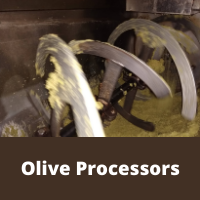Plant Health Australia (PHA) has announced recent updates to the Emergency Plant Pest Response Deed (EPPRD), which were issued on 4 January 2025.
The EPPRD is a government-industry partnership, outlining the national governance and investment in responding to and eradicating emergency plant pests (EPP). It is a formal legally-binding agreement between PHA, the Australian Government, all state and territory governments and national plant industry bodies. The Australian Olive Association Ltd is a signatory to the EPPRD and a small component of the Olive Levy goes to PHA to fund biosecurity activity.
Under the EPPRD, impacted growers may be eligible for reimbursement of certain costs or losses on account of response activities, known as owner reimbursement costs (ORCs).
Benefits of the Emergency Plant Pest Response Deed
The ratification of the EPPRD in October 2005 significantly increased Australia’s capacity to respond to EPP incidents, minimising uncertainty over management and funding arrangements. Other significant benefits include:
- Potential liabilities are known and funding mechanisms are agreed in advance.
- Industry and government representatives are appointed early and given authority to commit to actions and funding decisions from the outset of a response.
- A consistent and agreed national approach for managing incursions.
- Motivation and rationale to maintain a reserve of trained personnel and technical expertise.
Provision of accountability and transparency to all parties.
- Wider commitment to risk mitigation by all signatories through the development and implementation of biosecurity strategies and programs.
You can download the latest version of the EPPRD here.
PLANTPLAN
Working alongside the EPPRD is PLANTPLAN, the Australian Emergency Plant Pest Response Plan.
Endorsed by all EPPRD signatories, PLANTPLAN offers uniform guidelines for responding to emergency plant pest incidents at national, state/territory and local levels. It outlines national procedures, management structures, and information flow systems.
Each phase of a response is outlined, with details provided on the key roles and responsibilities of industry and government parties during each phase. PLANTPLAN documentation provides detailed and nationally consistent guidance on response procedures, roles and responsibilities, addresses national operational gaps and includes:
- guidelines
- job cards
- procedures
- forms and templates.
PLANTPLAN incorporates best practice in emergency plant pest (EEP) responses and is updated as required to incorporate new information or address gaps identified by the outcomes of incident debriefs and/or testing in preparedness activities.
You can download PLANTPLAN here.



